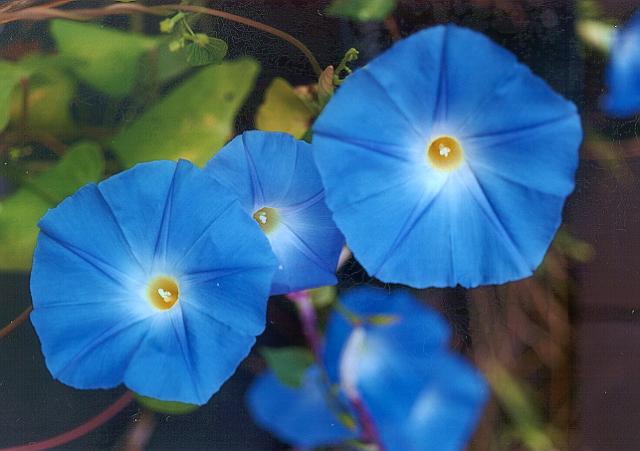
This tender perennial vine is native to the new World tropics and is a member of the Convolvulaceae family that also includes sweet potato, cypress vine, and dodder. Usually grown as an annual, the long bloom time and lush foliage make it a popular garden plant but because it tends to reseed and it can become a weed. For centuries, the people of Central America and elsewhere have used the seed for their hallucinogenic effects. Photo Credit Russell E Wikimedia Commons
Description: Vines grow up to 13′ long and have alternate, heart-shaped leaves that are 3-6″ long. Beginning in mid summer large buds open in the morning into trumpet-shaped flowers 1-2″ across in white, or shades of blue or pink. By noon the flowers begin to fade but the process begins again each day and continues until frost. The fruiting capsule contains numerous seed and the plants tend to reseed.
Poisonous Properties: The seeds of morning glories contain amides of lysergic acid that cause hallucinations that are similar but less potent than those caused by LSD. Other symptoms include cramps, facial flushing, dilated pupils, nausea, vomiting, diarrhea, drowsiness, and numbness of extremities. Seeds from commercial sources may offer an additional hazard because some suppliers dust the seed with a chemical fungicide that is poisonous to humans.